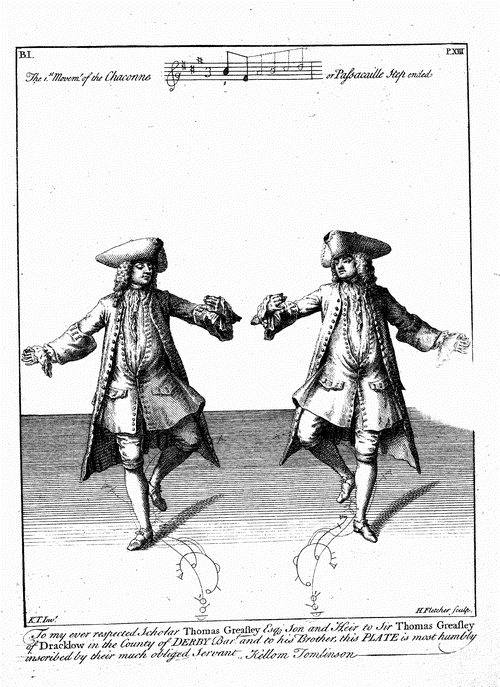
Click on any category to see alternative shows, or contact us for a program designed to your requirements
Categories THC LaCetra ALKrecital ALKguestDirector IlCorago
Medieval Renaissance&17th Baroque Classical
Hispanic Italian English French German Celtic
Anniversary Opera/Stage Sacred Folk/World New AllShows
Chorégraphie
Music for Louis XIV's dancing-masters
Andrew Lawrence-King
Baroque Triple Harp
This is a very flexible program,
with many performance options:
-
ALK solo recital (with optional dance)
-
THC chamber ensemble or baroque orchestra (with optional dance)
-
ALK as guest director for modern or baroque orchestra
(with optional dance, optional solo singer and/or vocal ensemble)
-
ALK as musical director for dance company
We even offer a sacred music version, inspired by 17th-century faith in God as the Prime Mover of the Heavenly Dance of the stars and planets.
-
Chorégraphie Divine: God is the great dancing-master
who leads all creation in the happiest steps and movements.
Mersenne Harmonie Universelle 1636

Music by Jean Baptiste Lully
preserved in the first baroque dance-book:
Raoul Auger Feuillet’s “Chorégraphie” (Paris 1700)
Preludes by Jean Henri D’Anglebert
Overtures & dances by D’Anglebert,
Lully & Campra
Many French ballets depicted the national characteristics and musical styles of foreign countries: Campra’s L’Europe Galante contrasts the noble French with the passionate Italians and proud Spaniards. There was a fashion for scenes a l’Espagnole, with fiery rhythms derived from the festive Canaries dance or the wild madness of the Folies.
Feuillet choreographs dances in both these genres, as well as delicate Sarabandes and powerful Gigues . Many dances are called Entrée, an opportunity for a theatrical character or a courtly beau to make a grand entrance and display his particular qualities.


Pavan des Saisons
Andrew Lawrence-King
Baroque harp.
Raoul Auger Feuillet published a book that would forever change the history of dance. Earlier treatises described dances in words, but Feuillet’s 1700 Chorégraphie uses a carefully defined notation to indicate movements, floor patterns and rhythmic phrasing. Bound together with this volume were two collections of dances notated in the new system, 15 by Feuillet himself and 9 by Louis Pécour, dancing master at the Académie Royale, set to music from Lully’s operas and ballets.
Feuillet’s book preserves in glorious detail the noble style of French dance from the court of Louis XIV, the “Sun King” who himself appeared in countless masques and ballets, dancing both in elegant heroic roles and in witty grotesques. Some scenes are set in the imaginary landscape of a pastoral idyll, others depict great cities, dark prisons, or exotic foreign lands; Harlequins and acrobats tumble across the stage. Noble amateurs were so highly accomplished that the most popular theatre choreographies were taken up as ballroom dances. Similarly, harpsichordist Jean Henri D’Anglebert re-arranged for solo instrument some of Lully’s grandest orchestral dance-music, including the famous Passacaille from Armide, choreographed by Pécour.
Together with Moliere’s dramas, operas by Lully and Campra, and dances by Beauchamps, Pécour and L’Abbée, Feuillet’s Chorégraphie is one of the crowning achievements of the French Baroque.
Passacaille d'Armide
Andrew Lawrence-King
Baroque harp.


Andrew Lawrence-King has performed Choregraphie as a solo recital (notably at the St Petersburg Early Music Festival and on tour for the Dutch Early Music Network), directing baroque orchestras (from Riga Sinfonietta in the East to Portland Baroque in the West, as well as with Concerto Copenhagen for whom he is Principal Guest Director), in chamber ensemble formation in England and Seville with The Harp Consort, and with the modern instruments of Finland's internationally renowned Ostrabothnian Chamber Orchestra, with dancers Steven Player and Paige Whitley-Baugess (see below).
The performance in Florence was linked to a vocal/choral/orchestral program celebrating Lully's Florentine origins, and the solo harp recital is available as a CD on the Harmonia Mundi USA label.
Here is a link to Paige Whitley-Baugess's baroque dance sampler, including several highlights from Chorégraphie, recorded together with her dance-partner Thomas Baird and her own musicians.
Raoul Auger Feuillet
The first Choreographer
Long was the Dancing Art unfix'd and free;
Hence lost in Error and Uncertainty:
Thro' various Hands in wild Confusion toss'd,
Its Steps were altered and its Beauties lost:
Till FEUILLET at length, Great Name! arose,
And did the Dance in Characters compose:
Each lovely Grace by certain Marks he taught.
And ev'ry Step in lasting Volumes wrote.
THE ART OF DANCING Soame Jenyns 1729
PRESS COMMENT
Andrew Lawrence-King
Baroque Triple Harp
This is playing as far removed from the traditional image of the harp as a pretty, tinkling instrument as it is possible to go.
Playing a large triple harp based on 17th-century models, Lawrence-King draws an almost unbelievable variety of sonorities and dynamics that range from soothingly whispered arpeggios to hard-hitting percussive chords, from silvery treble to a rich black bass that appears to emerge from the deepest of depths.
Fanfare USA
